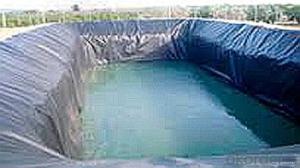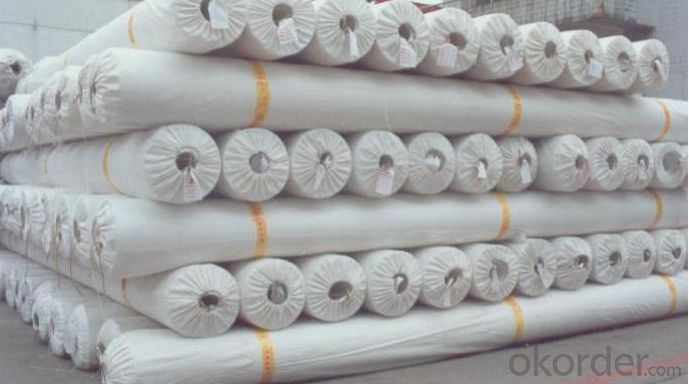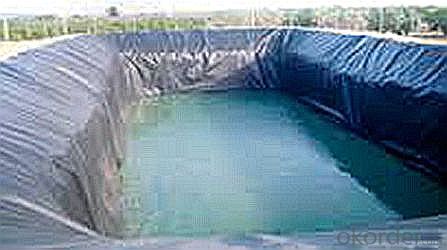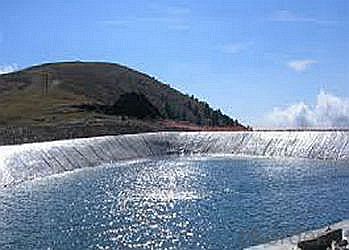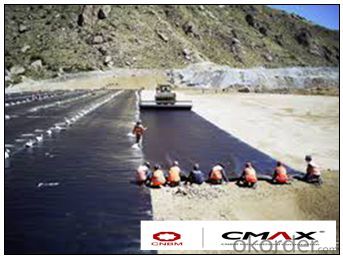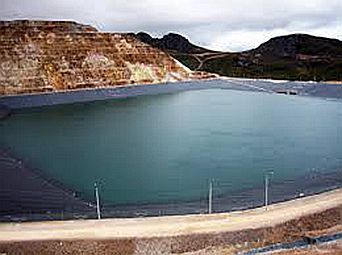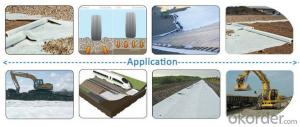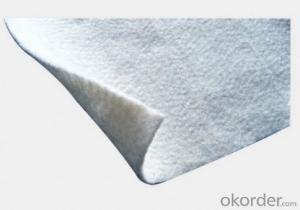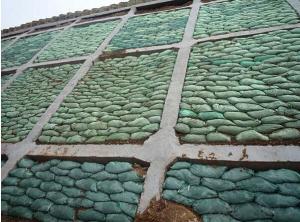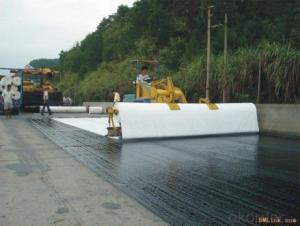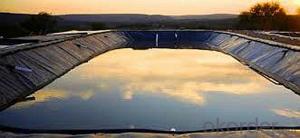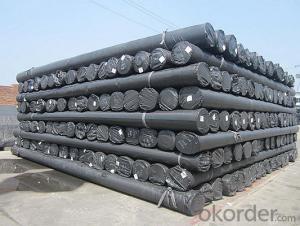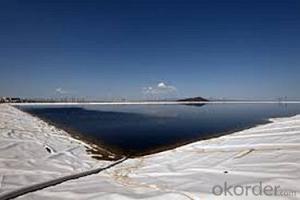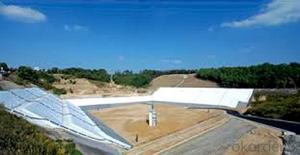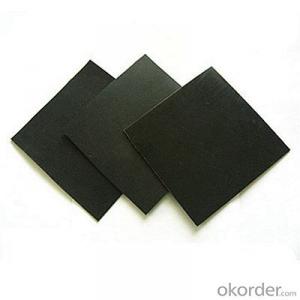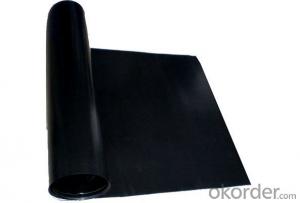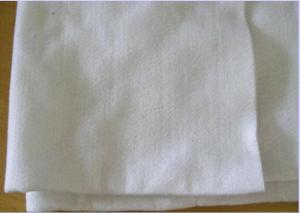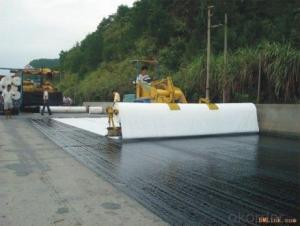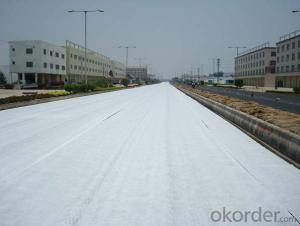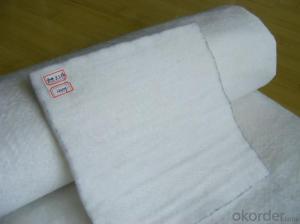High-Density Polyethylene and Polypropylene Geotextiles Geomembranes for Floating Reservoirs and Seepage Control
- Loading Port:
- China main port
- Payment Terms:
- TT OR LC
- Min Order Qty:
- 1000 m²
- Supply Capability:
- 10000000 m²/month
OKorder Service Pledge
OKorder Financial Service
You Might Also Like
Specification
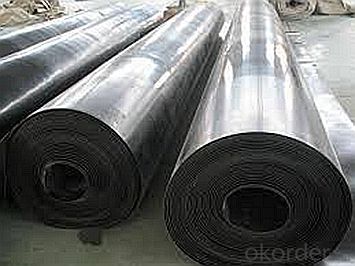

Applicaion
Flood control, Irrigation
Waterproofing Dams
Waste management: Landfill
Municipal Solid Waste
Wastewater Containment
Anaerobic Lagoon Cover Systems
Lagoon Liner Systems
Tunnel
We can produce following clients' requirements, for further information, please contact us.
Application
Widely used in the seepage roofing, engineering such as landfill, sewage &waste residue processing plant, dam, tunnel, building, traffic and environmental protection, etc.
Our Service
Quality assurance
1.On a regular basis or as per your request,we entrust national testing agencies to conduct quality inspections
2. Strictly in accordance with the ISO9001-2008 international quality system standard,we monitor and manage the whole process throughout production,quality testing,and measurement to ensure product quality
3. For quality-related construction delay or substandard construction(except for damage or losses due to customer’s responsibility or irresistible natural disasters),we have refunding,replacement,and repair services.We will respond to customers’ feedbacks on quality issues within 24 hours.
After-sales service
1.In order to provide customers with comprehensive technical support,we will provide technical and other related information upon request in a timely manner.
2.In required,we will appoint specialized technicians to the construction site to give technical trainings to construction people,and offer technical guidance throughout the whole construction process.
3.For damage due to shipment and delivery,after we receive the complaint,we will check the issure through provided pictures and videos.If our responsibility is confirmed,we wil offer free replacement.
4.When the construction is completed,as your request,our technical staff may participate in the final acceptance.
FAQ:
Q: What kind of payments does jenor support?
A: T/T, L/C, Cash are accepted.
Q: Do you charge for the samples?
A: Accordeing to our company policy, the samples are free, we only charge the freight fee. And we will return the freight fee during the next order.
Q: Can you produce according to customers' design?
A: Sure, we are professional manufacturer, OEM and ODM are both welcome.
Q: Do you have other products?
A: Yes, please check the pictures:
Packaging & Shipping
Packing: PLASTIC FILM INSIDE, AND WOVEN BAG OUTSIDE
Shipping: About 15 days after receipt the deposit
geotextile fabric
permeability,filtration,easy for construction
ISO and CE certificate
Good quality and competitive price
- Q: The properties of woven geotextiles
- Product features: 1, with a reinforcement function: to stabilize the project in the course of prolonged use of the transfer occurred, and can be the role of the soil in the local stress transmission or assigned to a larger area. 2, with the role of separation: woven geotextile with different geotechnical structure to form a stable interface, in accordance with the requirements to play their own characteristics and the overall role. 3, the role of drainage filter: allow moisture to block the loss of sand particles, in the drainage of geotextiles on the poor water in the soil can play the water along the geotextile quickly discharged the purpose. 4, the geotextile and geomembrane used in two different pressures between the material can play a role in tension diaphragm. 5, with a block function: the geotextile placed in the flow of liquid with suspended particles in the channel to organize fine mud particles, and allow the liquid through the function. 6, play the role of cushion mat: the geotextile placed on the slope can prevent the soil particles due to the erosion of rain and the loss or planting turf.
- Q: What are the different installation guidelines for geotextiles in reinforcement projects?
- The installation guidelines for geotextiles in reinforcement projects typically involve the following steps: 1. Site Preparation: Clear the construction area of any vegetation, debris, or loose soil. Level the ground and remove any protrusions or sharp objects that could damage the geotextile. 2. Geotextile Placement: Unroll the geotextile over the prepared area, ensuring it covers the entire project site. Overlaps between adjacent rolls should be at least 1 to 2 feet to provide proper continuity. 3. Anchoring: Secure the geotextile at the edges using anchor trenches, stakes, or other appropriate methods to prevent movement during installation or in the long term. 4. Jointing: Overlap adjacent geotextile panels by a minimum of 1 to 2 feet, depending on the project requirements. Secure the overlap with appropriate fasteners or adhesives to ensure proper functioning. 5. Protection: If necessary, cover the geotextile with a protective layer, such as a layer of soil or aggregate, to shield it from potential damage during construction activities or exposure to UV radiation. 6. Compaction: If the project involves soil stabilization or reinforcement, follow the recommended compaction procedures to ensure proper integration of the geotextile with the surrounding soil or aggregate. 7. Quality Control: Regularly inspect the geotextile installation to ensure that it is properly placed, free of damage, and functioning as intended. Any identified issues should be addressed promptly. It is important to note that specific installation guidelines may vary depending on the project type, site conditions, and the type of geotextile being used. It is recommended to consult the manufacturer's recommendations and seek professional guidance to ensure proper installation.
- Q: Hope expert expert to give the answer
- 1, side ditch, drains, blind ditch, cut ditch are road drainage facilities. 2, the drainage system is divided into the form of surface water and row of groundwater. Row of surface water: side ditch, drains, cut ditch; row of groundwater: blind ditch. 3, according to the road plane position is divided into: side ditch in the road side; drains can also be in the road side in the central zone; trench in the cutting section above; blind ditch in the roadbed width range. 4, according to the direction of the road is divided into: the direction of the ditch along the way; drains can also be the direction of the road can also cross the direction; cut the ditch along the way; blind ditch can be any direction. 5, according to the drainage function and cross-sectional size is divided into: drainage section of the largest; blind ditch second; side ditch, cut the smallest ditch. 6, according to the construction materials can be divided into: ditch can be pulp, dry piling, ramming, etc .; drains for the pulp or dry puzzle; blind ditch for the dry, pulp, gravel, concrete, ) And other combinations; cut ditch for the dry, pulp, ramming and so on. 7, according to the embankment type is divided into: fill, fill in the dug with a ditch, ditch, blind ditch; digging side, half filled half digging section ditch, drains, blind ditch, The ditch appears only in the digging section.
- Q: How do geotextiles contribute to the stability of road embankments?
- Geotextiles contribute to the stability of road embankments by providing reinforcement and separation. They act as a barrier between the road base and the underlying soil, preventing mixing and maintaining the integrity of the embankment. Additionally, geotextiles enhance drainage by allowing water to flow through while preventing the loss of soil particles. This helps to prevent erosion and maintain the stability of the embankment over time.
- Q: Do you want to make a geotextile?
- Is not the perforated tube, the cloth is not prevented from blocking the pipe hole. I am specializing in the production of geotextiles may be inside the trench inside the anti-seepage design, laying composite geomembrane
- Q: What are the factors to consider when selecting geotextiles for coastal protection projects?
- When selecting geotextiles for coastal protection projects, several factors need to be considered. These include the site's wave energy and tidal conditions, the soil type and composition, the expected lifespan of the project, and the required performance of the geotextile. Additionally, factors such as cost-effectiveness, environmental impact, and ease of installation and maintenance should also be taken into account. Overall, the selection of geotextiles should be based on a thorough evaluation of these factors to ensure the most suitable product is chosen for coastal protection projects.
- Q: Will geotextiles generally use where?
- Water conservancy project dam and slope protection of the filter, channel isolation, anti - seepage. ⒉ road, railway, airport runway foundation isolation, filter, drainage, soil slope, retaining wall and road reinforcement, drainage. ⒊ port engineering soft foundation treatment, beach embankment, harbor wharf and breakwater reinforcement, drainage. ⒋ landfill, thermal power plant ash dam, mine tailings dam isolation, seepage control.
- Q: How do geotextiles help in reducing the risk of soil liquefaction?
- Geotextiles help in reducing the risk of soil liquefaction by providing reinforcement and stabilizing the soil. They act as a barrier to prevent the movement of water within the soil, reducing the buildup of excess pore water pressure. This pressure is a major factor contributing to soil liquefaction during earthquakes. By promoting drainage and improving soil strength, geotextiles help to mitigate the potential for liquefaction and increase the overall stability of the soil.
- Q: Are geotextiles suitable for use in geogrid reinforced soil slopes?
- Yes, geotextiles are suitable for use in geogrid reinforced soil slopes. Geotextiles are commonly used in combination with geogrids to enhance the stability and performance of reinforced soil slopes. Geotextiles provide additional reinforcement, filtration, and separation functions, improving the overall effectiveness and durability of the slope system.
- Q: How are geotextiles tested for strength and durability?
- Geotextiles are typically tested for strength and durability through various methods such as tensile strength tests, puncture resistance tests, tear resistance tests, and UV stability tests. These tests help determine the geotextiles' ability to withstand different forces, environmental factors, and potential wear and tear, ensuring their quality and performance in different applications.
Send your message to us
High-Density Polyethylene and Polypropylene Geotextiles Geomembranes for Floating Reservoirs and Seepage Control
- Loading Port:
- China main port
- Payment Terms:
- TT OR LC
- Min Order Qty:
- 1000 m²
- Supply Capability:
- 10000000 m²/month
OKorder Service Pledge
OKorder Financial Service
Similar products
Hot products
Hot Searches
Related keywords

